Exploring the Sister Sanctuaries: OET in American Samoa and Palau
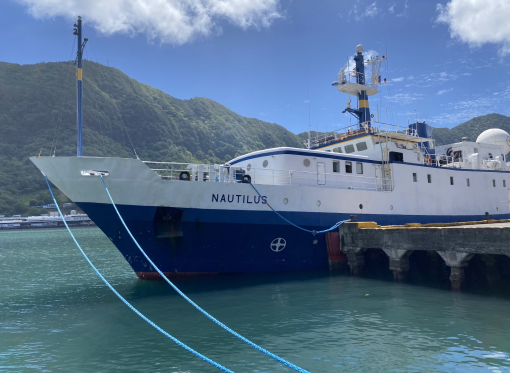
This blog was written by OET Media and Outreach Coordinator Jamie Zaccaria.
Islands across the Pacific are connected by deep cultural ties and a massive ocean - the largest feature on planet Earth. From these communities, the Pacific is the source of sustainable livelihoods, the primary regulator of a healthy climate, and the origin of cultural connections with the natural world. In managing and protecting the ocean, these connections between island communities have important parallels as well.
In 2020, the National Marine Sanctuary of American Samoa (NMSAS) and Palau National Marine Sanctuary (PNMS) partnered to become Sister Sanctuaries to honor their inherent connection and open the door for international collaboration. Though separated by thousands of miles, the NMSAS and PNMS share similar challenges, opportunities, and commitments to protecting ocean resources and indigenous culture even in the face of significant outside threats such as climate change, invasive species, and illegal fishing. This agreement helps both sanctuaries protect biodiversity and sustain ecosystem services and ecological functions and provides new and unique opportunities for community engagement.
Both NMSAS and PNMS are important hotspots of Pacific Ocean biodiversity with large open ocean and deep sea areas that haven’t yet been fully explored. Both American Samoa and Palau are Pacific island communities where the sanctuaries are led or supported by Indigenous communities. While science has shown high biodiversity in shallow regions of both NMSAS and PNMS, there is still an enormous amount to learn about the formations and habitats of the pelagic and deep sea areas.
The Sister Sanctuary partnership has already helped both sites make progress in each of the five opportunities for collaboration in the agreement; MPA management, science and research, best practices and capacity enhancement, conservation, partnership development, community engagement, and youth enrichment.
During our 2024 expedition season, Ocean Exploration Trust (OET) has been honored to lead deep ocean expeditions in both locations bringing together partners and providing opportunities to deepen the knowledge of and connections between these important places.
In August and September, OET conducted two expeditions — E Mamana Ou Gataifale I & II (NA164 & NA165) — aboard E/V Nautilus to explore deep-sea habitats around American Samoa in collaboration with the NMSAS and other partners. From October to December, OET was a guest in Palau to lead three expeditions (NA167, NA168, and NA169) working closely with the Palau International Coral Reef Center (PICRC), NOAA Ocean Exploration, and other Palauan collaborators to explore the waters of the PNMS. These expeditions gathered seafloor mapping data, water column data, and explored the seafloor with remotely operated vehicles to illuminate deep-sea habitats.
These expeditions were co-designed with local communities to uplift traditional knowledge and cultural best practices alongside Western scientific understanding. Expedition naming is part of a collaborative effort to appropriately reflect regional culture and values across the expeditions. The American Samoan E Mamana Ou Gataifale expeditions were developed with input from resource managers, scientists, educators, cultural practitioners, and other ocean stakeholders, including through a March 2024 workshop convening government and agency representatives at the Tauese P.F. Sunia Ocean Center in Utulei. The Palau expeditions were developed alongside community leaders and agencies. The expeditions were named Lebuu’s Voyage by Palauan stakeholders as part of a strategic effort to advance traditional knowledge and best practices.This process was facilitated by the Bureau of Cultural & Historical Preservation Office, OneReef, and the Palau International Coral Reef Center.
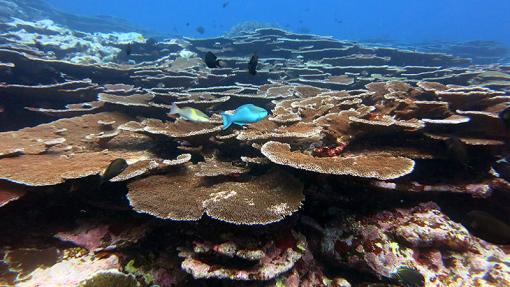
Fagatele Bay, American Samoa
This unique timing to have deep-sea expeditions in both places within one year provided further opportunities for the Sister Sanctuaries to collaborate.
“We’re really interested in understanding ecological linkages between the deep sea and the shallows in both of these regions. How do they support productivity throughout the water column and potentially even into shallow reef systems? The Sanctuaries share a lot of these questions and desire to answer them. We’re excited to work with OET to explore the deeper parts of both sanctuaries,” says Val Brown, Research Coordinator with NMSAS. “By teaming up, both Sanctuary teams are better able to advocate for their needs from NOAA, the Palauan government, community stakeholders, and other partners.”
Large Scale Marine Protected Areas
Large-scale MPAs are big Marine Protected Areas that are actively managed to conserve an entire geographic extent of the area. Both PNMS and NMSAS are designed this way to manage continuous, large open ocean areas. LSMPAs can require different management approaches because of the challenges of monitoring offshore environments and understanding large system-scale dynamics like incremental impacts from climate change, seasonality, animal migration, and gradients of human impact with different regulations throughout a large area.
The NMSAS includes six protected areas across the Samoan Archipelago, including 13,581 square miles of nearshore coral reef and offshore open ocean waters. The largest marine Sanctuary in the US system, NMSAS includes naturally and culturally significant ecosystems such as Rose Atoll Marine National Monument and the hydrothermally active Vailuluʻu Seamount. The sanctuary is a haven for some of the oldest and largest Porites coral in the world, as well as archeological, biological, and geological resources.
Euotelel a Klingil a Debel Belau or PNMS is one of the world’s largest LSMPAs. The PNMS protects 80% of Palau’s Exclusive Economic Zone and covers 475,077 km2, an area larger than the state of California. Despite being rich in natural and cultural resources, there is very little data available from deep ocean habitats protected within PNMS. Signed into legislation in 2015, the event also marked the first time in history that traditional leaders formally designated a traditional moratorium or bul to this offshore, pelagic space.
“Very little is known about the PNMS so we’ve been extremely fortunate to collaborate with OET and NOAA on these unique expeditions. Without these partnerships, we simply wouldn’t have the expertise and resources to conduct this work so it’s assuring that we can increase our scientific understanding of the PNMS and continue to be responsible stewards of this great oceanic expanse,” says Roxanne Blesam Sengebau, CEO of the Palau International Coral Reef Center.
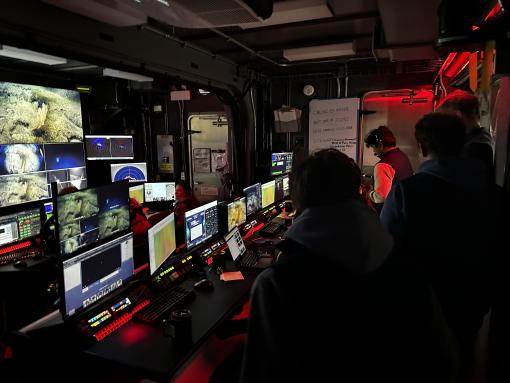
Exploration in the Sister Sanctuaries
NMSAS has been explored by many teams including Hawai’i Institute of Marine Biology, NOAA Ocean Exploration, Ocean Exploration Trust, and many National Science Foundation-funded researchers. The waters of Palau have been studied extensively in shallow water, with drop camera deployments by the National Geographic Pristine Seas Program along the reef slope, and crewed submersible dives by JAMSTEC and the Five Deeps expedition in the Palau Trench. However, there remains a lot to be learned from the deep water regions of both Sanctuaries.
In 2022 PICRC assembled experts from across the Pacific to develop their science and monitoring strategy for the PNMS.
“The sanctuary monitoring strategy workshop really drove home to me the similar research needs between our two Sanctuaries and gave us an opportunity to articulate them,” Brown says. “The meeting highlighted the need for this type of exploration and even basic science in the Pacific Islands- not just Palau and American Samoa but all the islands between and around us that we share resources with.”
The same year, the Republic of Palau and the United States cohosted the seventh Our Ocean Conference with both sanctuaries participating under the theme of “Our Ocean, Our People, Our Prosperity." The conference brought together global government representatives to work together for tangible progress in protecting the ocean. At the conference, the United States announced more than 110 commitments, including a pledge to support Palau in mapping the Sanctuary. Mapping is a major priority for both sanctuaries to understand the diversity of habitats and is a critical first step in ocean exploration.
“The PNMS Science & Monitoring Strategy came together with the help of numerous experts and successfully lays out a prioritized road map of the kind of research that we need to do in order to effectively manage the PNMS,” says King Malsol Sam, Program Manager of the PNMS.
Both NMSAS and PNMS rely on science for their management but also have huge gaps in their knowledge bases in depths from 500 - 5,000 m where OET operations occur. While similar latitudinally, they’re thousands of miles apart in different regions of the Pacific (South and West, respectively). Scientists are curious how they’re both similar and different and are looking forward to comparing data from both sanctuaries to learn more about the region’s overall biodiversity.
“These types of research cruises are super important because they bring together dynamic teams and high-caliber resources to explore the deep sea. I’m hoping that with some baseline data, we can identify solutions that we can enact with the resources we have at home. The more we learn, the better we can characterize our Sanctuaries and further develop our research strategies to support management,” says Brown.
The NA164 and NA165 expeditions were funded by NOAA Ocean Exploration via the Ocean Exploration Cooperative Institute with additional funding from the Bureau of Ocean Energy Management and the NOAA Uncrewed Systems Operations Center. The NA167, NA168, and NA169 expeditions are funded by NOAA Ocean Exploration via the Ocean Exploration Cooperative Institute as a contribution to the US government commitment made at the 7th Our Oceans Conference to support the mapping of the Sanctuary.
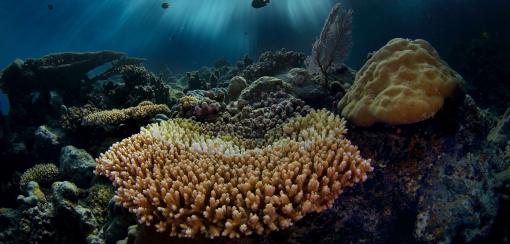
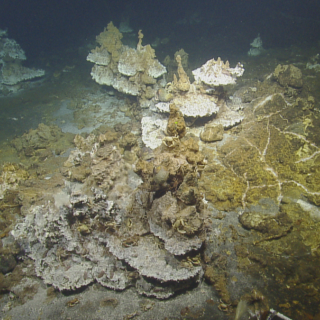
E Mamana Ou Gataifale I - American Samoa
Over the last three years, the Ocean Exploration Cooperative Institute has been advancing the integration of multiple exploration technologies aboard E/V Nautilus, and this year, we bring these new capacities to American Samoa.
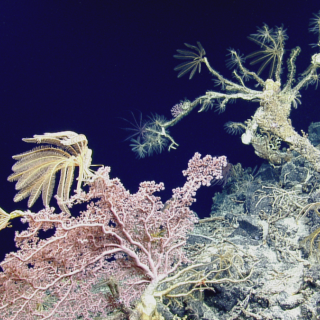
E Mamana Ou Gataifale II - American Samoa
American Samoa is the southernmost U.S. territory, centered in the South Pacific, 2,300 miles southwest of Hawaiʻi, and 1,500 miles northeast of New Zealand. It is home to the cradle of Polynesia’s oldest culture.
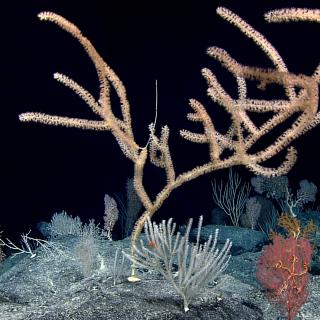
Lebuu's Voyage I - Palau
Palau National Marine Sanctuary (PNMS) –protection secured by Euotelel a Klingil a Debel Belau– is one of the most ambitious conservation efforts on Earth. Despite being rich in natural and cultural resources, there is very little data available from deep ocean habitats protected within PNMS. Working closely with the Palau International Coral Reef Center (PICRC), NOAA Ocean Exploration, and other Palauan and U.S.
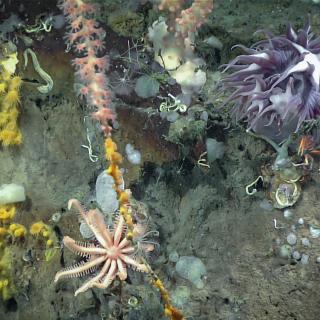
Lebuu's Voyage II - Palau
Building on the progress in the first expedition, this 11-day expedition will continue exploring Palau National Marine Sanctuary (PNMS) to understand seafloor features and the biodiversity that call deep sea habitats around Palau home. Specific cruise objectives will continue to be refined as we work with community and scientific partners.



